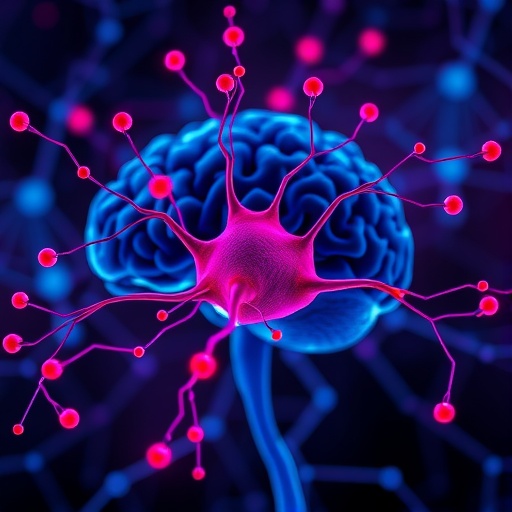
In the sprawling urban landscapes of the United States, noise pollution often fades into the background—an accepted, if unwelcome, soundtrack to city life. Yet, beneath the din of honking cars, construction, and bustling crowds lies a serious public health concern that is increasingly capturing scientific attention. Until recently, systematic measurement and comprehensive profiling of community noise were glaring gaps in environmental epidemiology, particularly in medium to large U.S. cities. This is precisely the void that a groundbreaking study by Mowrer, Larkin, Roscoe, and colleagues seeks to fill, as detailed in their recent publication in the Journal of Exposure Science & Environmental Epidemiology.
The researchers embarked on a meticulous, data-driven exploration of community noise, leveraging systematic measurement techniques combined with advanced machine learning algorithms. This innovative methodology enabled them to construct nuanced and highly accurate acoustic profiles of urban soundscapes. Their approach goes far beyond traditional noise surveys, which often rely on sporadic or uneven sampling, offering instead a continuous, comprehensive representation of noise exposure in real-world settings. This level of detail is critical because the health effects of noise pollution are not only determined by intensity but also by the temporal and spectral qualities of noise events.
The study was conducted in a medium-large U.S. city, serving as a representative microcosm of urban noise environments across the country. Through strategic placement of sound monitors across diverse neighborhoods, the researchers captured an extensive dataset that spans variable socio-economic areas, traffic patterns, and land use types. These spatially resolved noise measurements present an unprecedented level of granularity, allowing for the identification of distinct community noise profiles and the recognition of noise pollution hotspots in ways that traditional methods cannot achieve.
.adsslot_PAKjfa2vhk{width:728px !important;height:90px !important;}
@media(max-width:1199px){ .adsslot_PAKjfa2vhk{width:468px !important;height:60px !important;}
}
@media(max-width:767px){ .adsslot_PAKjfa2vhk{width:320px !important;height:50px !important;}
}
ADVERTISEMENT
Machine learning played a pivotal role in this research, enabling the classification of noise events into meaningful categories such as traffic, industrial, recreational, and transient noises. By training algorithms on labeled sound samples, the team developed a predictive model capable of real-time noise source identification. This sophisticated analysis highlights the complexity of urban soundscapes, revealing overlapping noise sources and temporal variations that affect human health in multifaceted ways.
The significance of this study extends beyond technical innovation; it underscores the urgent need to quantify community noise exposure as a factor in public health research. Epidemiological evidence increasingly associates chronic noise exposure with a host of adverse health outcomes, including cardiovascular diseases, sleep disturbances, cognitive impairment, and mental health disorders. However, without systematic noise data, these associations remain difficult to quantify and address through policy and urban planning.
Results from this research reveal not only the overall noise levels across the city but also the temporal patterns that characterize particular neighborhoods. For instance, some residential areas experience episodic spikes in noise corresponding to late-night traffic or social activities, while industrial zones exhibit relatively constant elevated noise levels. Understanding these patterns is critical for tailoring interventions and for informing vulnerable populations about their specific risks.
Importantly, the study confronts the challenge of environmental justice in noise pollution. It provides evidence that marginalized communities often bear disproportionate noise burdens, a factor rarely captured comprehensively in prior research. By integrating demographic data with noise profiles, the study offers a pathway for targeted mitigation strategies that consider social equity alongside environmental health.
The adoption of machine learning methodologies in environmental noise research signals a new era in exposure assessment. It paves the way for scalable, affordable, and continuous noise monitoring systems that can be deployed in cities nationwide. Such technological advancements facilitate not only research but also real-time public health surveillance and urban noise management.
Moreover, the richness of the generated dataset invites interdisciplinary collaboration, blending urban planning, public health, data science, and social policy. Noise maps emerging from this kind of research can guide urban design decisions, such as traffic calming measures, zoning regulations, and public awareness campaigns aimed at reducing community noise exposure.
As cities continue to densify and urban activities intensify, understanding noise pollution through high-resolution, data-driven methods remains imperative. This study sets a precedent by proving the feasibility and utility of systematic noise measurement at scale, combined with machine learning approaches. Future research can build upon these findings to explore longitudinal effects, individual exposure assessments, and intervention outcomes.
In conclusion, the work by Mowrer and colleagues marks a significant leap forward in environmental epidemiology. Their innovative combination of acoustic monitoring and machine learning provides a powerful framework for comprehensively characterizing community noise, unraveling its complexities, and elucidating its public health implications. As urban populations grow and the noise landscape evolves, such research is indispensable for creating healthier, more livable cities.
This study not only advances scientific understanding but also carries profound implications for urban policy and community well-being. It invites city planners, public health officials, and policymakers to recognize the urgency of systematically addressing noise pollution. By harnessing cutting-edge technology to quantify and classify urban noise, we can craft more effective, equitable strategies that mitigate its pervasive health threats.
The findings also highlight the potential for these methodologies to be adapted in other metropolitan areas across the globe. As environmental noise is a ubiquitous challenge, the scalable nature of systematic measurement and machine learning models makes this approach highly transferrable. The prospect of generating comparable noise profiles worldwide opens opportunities for global public health initiatives addressing noise pollution.
Furthermore, the integration of subjective community feedback with objective noise data presents a promising avenue for future research. Combining residents’ perceptions and experiences with measured noise characteristics can enrich our understanding of the psychosocial impacts of noise, fostering more comprehensive approaches to urban noise management.
Altogether, this research ushers in an exciting frontier for noise pollution science. It exemplifies how technological innovation and environmental health scholarship can unite to confront one of the most widespread yet underappreciated urban health hazards. As this field evolves, we anticipate increasingly sophisticated tools and strategies to emerge—tools that will empower cities to reclaim quietude and protect the health of their inhabitants.
Subject of Research: Systematic measurement and machine learning-based characterization of community noise pollution in urban settings within the United States.
Article Title: Systematic measurement and machine learning-based profile characterization of community noise in a medium-large city in the United States.
Article References:
Mowrer, C., Larkin, A., Roscoe, C. et al. Systematic measurement and machine learning-based profile characterization of community noise in a medium-large city in the United States. J Expo Sci Environ Epidemiol (2025). https://doi.org/10.1038/s41370-025-00794-y
Image Credits: AI Generated
DOI: https://doi.org/10.1038/s41370-025-00794-y
Tags: acoustic profiling of citiesadvanced algorithms in noise mappingcommunity noise measurement techniquescontinuous noise monitoring solutionsenvironmental epidemiology researchhealth effects of urban noisemachine learning in environmental sciencenoise exposure assessment methodspublic health impact of noisesystematic noise data collectionurban noise pollutionurban soundscapes analysis





